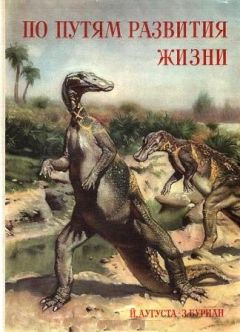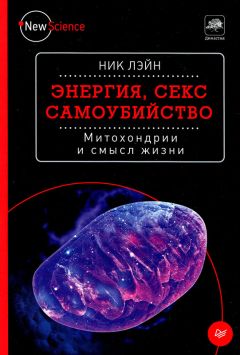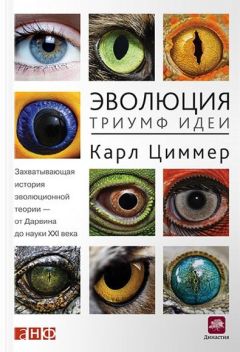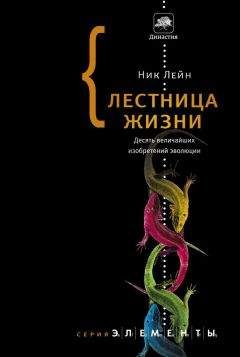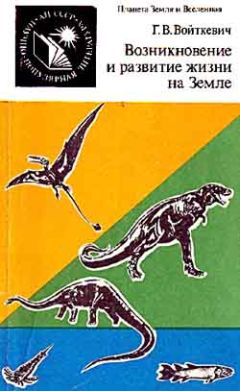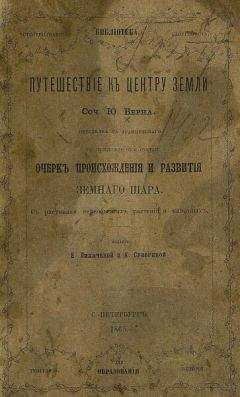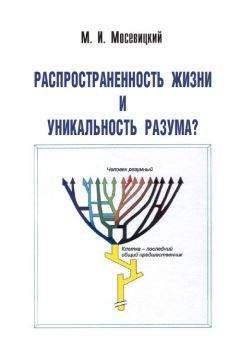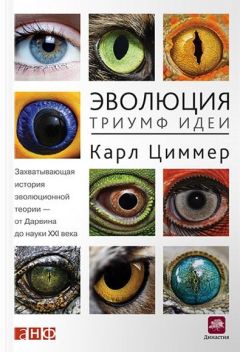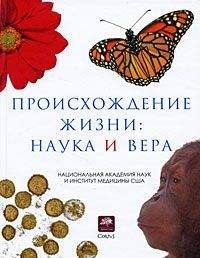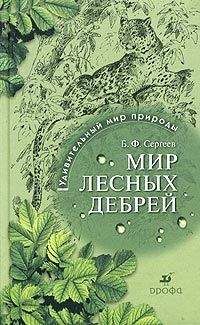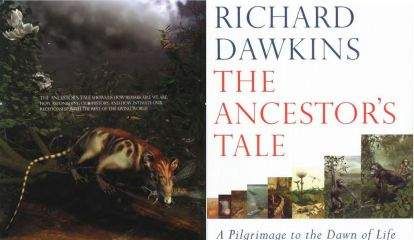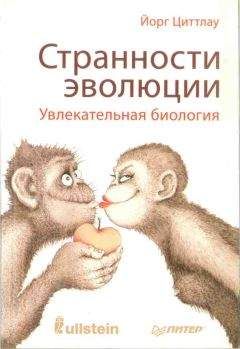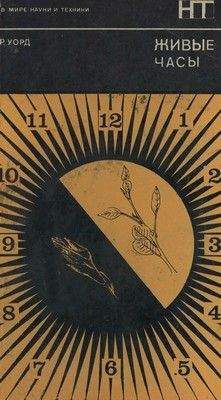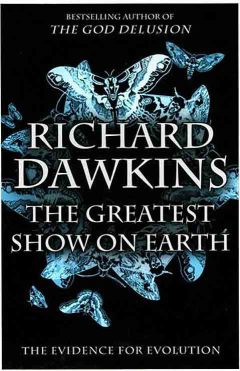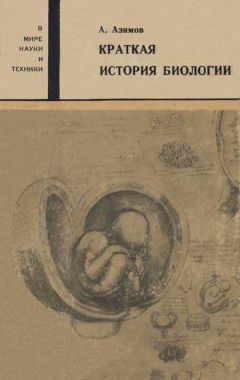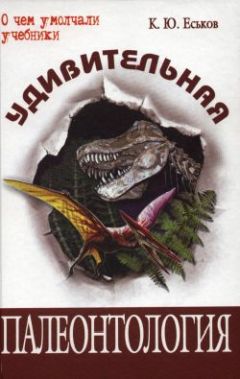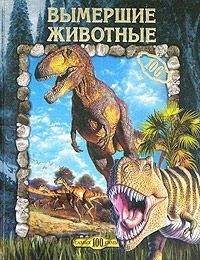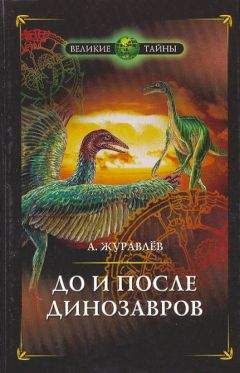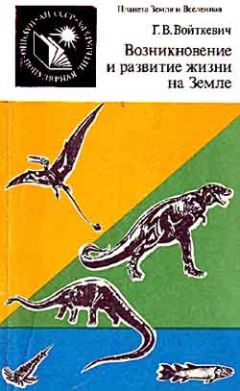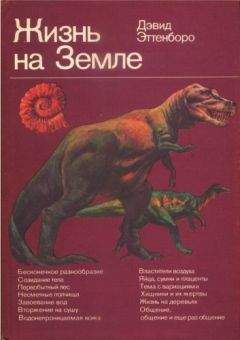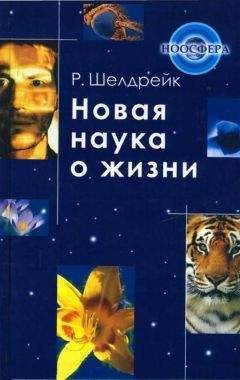Питер Уорд - Новая история происхождения жизни на Земле
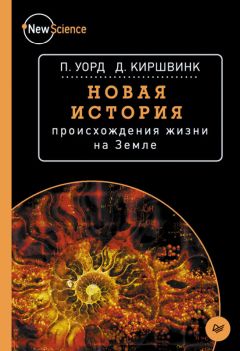
Скачивание начинается... Если скачивание не началось автоматически, пожалуйста нажмите на эту ссылку.
Жалоба
Напишите нам, и мы в срочном порядке примем меры.
Описание книги "Новая история происхождения жизни на Земле"
Описание и краткое содержание "Новая история происхождения жизни на Земле" читать бесплатно онлайн.
Общепринятая история происхождения жизни на Земле устарела. Двое ученых, Питер Уорд и Джозеф Киршвинк, предлагают книгу, в которой собраны все выводы последних исследований. Авторы показывают, что многие наши прежние представления об истории происхождения жизни неверны. Во-первых, развитие жизни не было неторопливым, постепенным процессом: катаклизмы способствовали формированию жизни больше, чем все остальные силы вместе взятые. Во-вторых, основа жизни — углерод, но какие еще элементы определили ее эволюцию? В-третьих, со времен Дарвина мы мыслили в категориях эволюции видов. На самом деле имела место эволюция экосистем — от подводных вулканов до тропических лесов, — которые сформировали мир, каким мы его знаем. Опираясь на свой многолетний опыт в палеонтологии, биологии, химии, астробиологии, Уорд и Киршвинк рассказывают историю жизни на Земле, такую фантастическую, что ее трудно представить, и в то же время такую знакомую, что нельзя пройти мимо.
217
K. Plelgen, «The Mammal Family Tree,» Science 334, no. 6055 (2011): 458–59.
218
Q. Ji et al., «The Earliest Known Eutherian Mammal,» Nature 416, no. 6883 (2002): 816–22.
219
Z.-X. Luo et al., «A Jurassic Eutherian Mammal and Divergence of Marsupials and Placentals.» Nature 476, no. 7361 (2011): 442–45.
220
K. Jiang, «Fossil Indicates Hairy, Squirrel-sized Creature Was Not Quite a Mammal,» Chicago News, August 7, 2013; C. F. Zhou, «A Jurassic Mammaliaform and the Earliest Mammalian Evolutionary Adaptations,» Nature 500 (2013: 163–67).
221
Z.-X. Luo, «Transformation and Diversification in Early Mammal Evolution,» Nature 450, no. 7172 (2007): 1011–19.
222
J. P. Kennett and L. D. Stott, «Abrupt Deep-Sea Warming, Paleoceanographic Changes and Benthic Extinctions at the End of the Paleocene,» Nature 353 (1991): 225–29.
223
U. Rohl et al., «New Chronology for the Late Paleocene Thermal Maximum and Its Environmental Implications,» Geology 28, no. 10 (2000): 927–30; T. Westerhold et al., «New Chronology for the Late Paleocene Thermal Maximum and Its Environmental Implications,» Palaeogeography, Palaeoclimatology, Palaeoecology 257 (2008): 377–74.
224
P. L. Koch et al., «Correlation Between Isotope Records in Marine and Continental Carbon Reservoirs Near the Paleocene-Eocene Boundary,» Nature 358 (1992); 319–22.
225
M. D. Hatch, «C(4) Photosynthesis: Discovery and Resolution,» Photosynthesis Research 73, nos. 1–3 (2002): 251–56.
226
E. J. Edwards and S. A. Smith, «Phylogenetic Analyses Reveal the Shady History of G Grasses,» Proceedings of the National Academy of Sciences 107, nos. 6 (2010): 2532–37; C. P. Osborne and R. P. Freckleton, «Ecological Selection Pressures for C4 Photosynthesis in the Grasses,» Proceedings of the Royal Society B-Biological Sciences 276, no. 1663 (2009): 1753–60.
227
Наше личное примечание к данной главе: один из нас (Питер Уорд) держал двух попугаев в качестве домашних животных (хотя в отношениях между человеком и птицей непонятно, кто кого содержит). При этом был очевиден уровень интеллекта попугаев. И подобное утверждение касается не только попугаев. Если понаблюдать за воронами или другими птицами, которые держатся стаями, можно заметить их удивительный и, более того, прогрессирующий интеллект. Забавно, что от птиц пошло уничижительное выражение «куриные мозги». Сравните размер нашего мозга с размером мозга жако и задумайтесь, что эти птицы могут строить предложения, заниматься простой арифметикой, и их поведение в целом очень сложно структурировано. Мы все надеемся на то, что курица, которую мы едим каждый день, крайне глупа. А вот, может, и нет!
228
K. Padian and L. M. Chiappe, «Bird Origins,» in P. J. Currie and K. Padian, eds., Encyclopedia of Dinosaurs (San Diego: Academic Press, 1997), 41–96; J. Gauthier, «Saurischian Monophyly and the Origin of Birds,» in K. Padian, Memoirs of the California Academy of Sciences 8 (1986): 1–55; L. M. Chiappe, «Downsized Dinosaurs: The Evolutionary Transition to Modern Birds,» Evolution: Education and Outreach 2, no. 2 (2009): 248–56.
229
J. H. Ostrom, «The Ancestry of Birds,» Nature 242, no. 5393 (1973): 136; J. Gauthier, «Saurischian Monophyly and the Origin of Birds,» in K. Padian, Memoirs of the California Academy of Sciences 8 (1986): 1–55; J. Cracraft, «The Major Clades of Birds,» in M. J. Benton, ed., The Phylogeny and Classification of the Tetrapods, Volume I: Amphibians, Reptiles, Birds (Oxford: Clarendon Press, 1988), 339–61.
230
A. Feduccia, «On Why the Dinosaur Lacked Feathers,» in M. K. Hecht et al., eds. The Beginnings of Birds: Proceedings of the International Archaeopteryx Conference Eichstatt 1984 (Eichstatt: Freunde des Jura-Museums Eichstatt, 1985), 75–79; A. Feduccia et al., «Do Feathered Dinosaurs Exist? Testing the Hypothesis on Neontological and Paleontological Evidence,» Journal of Morphology 266, no. 2 (2005): 125–66.
231
J. O’Connor, «A Revised Look at Liaoningornis Longidigitris (Aves).» Vertebrate PalAsiatica 50 (2012): 25–37.
232
A. Feduccia, «Explosive Evolution in Tertiary Birds and Mammals,» Science 267, no. 5198 (1995): 637–38; A. Feduccia, «Big Bang for Tertiary’ Birds?» Trends in Ecology and Evolution 18, no. 4 (2003): 172–76.
233
M. Norell and M. Ellison, Unearthing the Dragon: The Great Feathered Dinosaur Discovery (New York: Pi Press, 2005); R. Prum, «Are Current Critiques of the Theropod Origin of Birds Science? Rebuttal to Feduccia 2002,» Auk 120, no. 2(2003): 550–61; S. Hope, «The Mesozoic Radiation of Neomithes,» in L. M. Chiappe et al., Mesozoic Birds: Above the Heads of Dinosaurs (Oakland: University of California Press, 2002), 339–88; P. Ericson et al., «Diversification of Neoaves: Integration of Molecular Sequence Data and Fossils,» Biology Letters 2, no. 4 (2006): 543–47; K. Padian, «The Origin and Evolution of Birds by Alan Feduccia (Yale University Press, 1996),» American Scientist 85: 178–81; M. A. Norell et al., «Flight from Reason. Review of: The Origin and Evolution of Birds by Alan Feduccia (Yale University Press, 1996),» Nature 384, no. 6606 (1997): 230; L. M. Witmer, «The Debate on Avian Ancestry: Phylogeny, Function, and Fossils,» in L. M. Chiappe and L. M. Witmer, eds., Mesozoic Birds: Above the Heads of Dinosaurs (Berkeley: University of California Press, 2002), 3–30.
234
C. Peiji et al., «An Exceptionally Preserved Theropod Dinosaur from the Yixian Formation of China,» Nature 391, no. 6663 (1998): 147–52; G. S. Paul. Dinosaurs of the Air: The Evolution and Loss of Flight in Dinosaurs and Birds (Baltimore: Johns Hopkins University Press, 2002), 472: X. Xu et al., «An Archaeopteryx like Theropod from China and the Origin of Avialae,» Nature 475 (2011): 465–70.
235
D. Hu et al., «A Pre-Archaeopteryx Troodontid Theropod from China with Long Feathers on the Metatarsus,» Nature 461, no. 7264 (2009): 640–43; A. H. Turner et al., «A Basal Dromaeosaurid and Size Evolution Preceding Avian Flight,» Science 317, no. 5843 (2007): 1378–81; X. Xu et al., «Basal Tyrannosauroids from China and Evidence for Protofeathers in Tyrannosauroids,» Nature 431, 7009 (2004): 680–84: C. Foth. «On the Identification of Feather Structures in Stem-Line Representatives of Birds: Evidence from Fossils and Actuopalaeontology,» Palaontologische Zeitschrift 86, no. 1 (2012): 91–102; R. Prum and A. H. Brush, «The Evolutionary Origin and Diversification of Feathers,» Quarterly Review of Biology 77, no. 3 (2002): 261–95.
236
M. H. Schweitzer et al., «Soft-Tissue Vessels and Cellular Preservation in Tyrannosaurus rex,» Science 307, no. 5717 (2005); C. Dal Sasso and M. Signore, «Exceptional Soft-Tissue Preservation in a Theropod Dinosaur from Italy,» Nature 392, no. 6674(1998): 383–87; M. H. Schweitzer et al., «Heme Compounds in Dinosaur Trabecular Bone,» Proceedings of the National Academy of Sciences of the United States of America 94, no. 12 (1997): 6291–96.
237
Dr. Paul Willis, «Dinosaurs and Birds: The Story,» The Slab, http://www.abc.net.au/science/slab/dinobird/story.htm.
238
J. A, Clarke et al., «Insight into the Evolution of Avian Flight from a New Clade of Early Cretaceous Omithurines from China and the Morphology of Yixianomis grabaui,» Journal of Anatomy 208 (3 (2006): 287–308.
239
N. Brocklehurst et al., «The Completeness of the Fossil Record of Mesozoic Birds: Implications for Early Avian Evolution,» PLOS One (2012); J. A. Clarke et al., «Definitive Fossil Evidence for the Extant Avian Radiation in the Cretaceous,» Nature 433 (2005): 305–8.
240
L. Witmer, «The Debate on Avian Ancestry: Phylogeny, Function and Fossils,» in L. Chiappe et al., eds., Mesozoic Birds: Above the Heads of Dinosaurs (Berkeley, California: University of California Press, 2002), 3–30; L. M. Chiappe and C. J. Dyke, «The Mesozoic Radiation of Birds,» Annual Review of Ecology and Systematics 33 (2002): 91–124; J. W. Brown et al., «Strong Mitochondrial DNA Support for a Cretaceous Origin of Modem Avian Lineages,» BMC Biology 6 (2008): 1–18; J. Cracraft, «Avian Evolution, Gondwana Biogeography and the Cretaceous-Tertiary Mass Extinction Event,» Proceedings of the Royal Society B-Biological Sciences 268 (2001): 459–69; S. Hope, «The Mesozoic Radiation of Neomithes,» in L. M. Chiappe et al., eds., Mesozoic Birds: Above the Heads of Dinosaurs (Berkeley: University of California Press, 2002), 339–88; Z. Zhang et al., «A Primitive Confuciusornithid Bird from China and Its Implications for Early Avian Flight,» Science in China Series D 51, no. 5 (2008): 625–39.
241
N. R. Longrich et al., «Mass Extinction of Birds at the Cretaceous-Paleogene (K-Pg) Boundary,» Proceedings of the National Academy of Sciences 108 (2011): 15 253-57; G. Mayr, Paleogene Fossil Birds (Berlin; Springer, 2009), 262; J. A. Clarke et al., «Definitive Fossil Evidence for the Extant Avian Radiation in the Cretaceous,» Nature 433 (2005): 305–8; T. Fountaine, et al., «The Quality of the Fossil Record of Mesozoic Birds,» Proceedings of the Royal Academy of Sciences B-Biological Science 272 (2005): 289–94.
242
P. Ericson et al. «Diversification of Neoaves: Integration of Molecular Sequence Data and Fossils,» Biology Letters 2, no.4 (2006): 543–47; см. также. W. Brown et al., «Nuclear DNA Does Not Reconcile „Rocks“ and „Clocks“ in Neoaves: A Comment on Ericson et al.,» Biology Letters 3, no. 3 (2007): 257–20; A. Suh et al., «Mesozoic Retroposons Reveal Parrots as the Closest Living Relatives of Passerine Birds,» Nature Communications 2, no. 8 (2011).
243
K. J. Mitchell et al., «Ancient DNA Reveals Elephant Birds and Kiwi Are Sister Taxa and Clarifies Ratite Bird Evolution,» Science 344, no. 6186 (2014): 898–900.
244
P. Ward, Rivers in Time (New York: Columbia University Press, 2000).
245
R. Leakey and R. Lewin, The Sixth Extinction (Norwell, MA: Anchor Press, 1996).
246
«Lucy's Legacy: The Hidden Treasures of Ethiopia,» Houston Museum of Natural Science, 2009.
247
D. Johanson and M. Edey, Lucy, the Beginnings of Humankind (Granada: St. Albans, 1981); W. L. Jungers, «Lucy’s Length: Stature Reconstruction in Australopithecus afarensis (A. L.288–1) with Implications for Other Small-Bodied Hominids,» American Journal of Physical Anthropology 76, no. 2 (1988): 227–31.
248
B. Yirka, «Anthropologist Finds Large Differences in Gait of Early Human Ancestors,» Phys.org, 12 ноября, 2012; P. A. Kramer, «Brief Communication: Could Kadanuumuu and Lucy Have Walked Together Comfortably?» American Journal of Physical Anthropology 149 (2012): 616–20; P. A. Kramer and D. Sylvester, «The Energetic Cost of Walking: A Comparison of Predictive Methods,» PLoS One (2011).
249
D. J. Green and Z. Alemseged, «Australopithecus afarensis Scapular Ontogeny, Function, and the Role of Climbing in Human Evolution,» Science 335, no. 6106 (2012): 514–17.
Подписывайтесь на наши страницы в социальных сетях.
Будьте в курсе последних книжных новинок, комментируйте, обсуждайте. Мы ждём Вас!
Похожие книги на "Новая история происхождения жизни на Земле"
Книги похожие на "Новая история происхождения жизни на Земле" читать онлайн или скачать бесплатно полные версии.
Мы рекомендуем Вам зарегистрироваться либо войти на сайт под своим именем.
Отзывы о "Питер Уорд - Новая история происхождения жизни на Земле"
Отзывы читателей о книге "Новая история происхождения жизни на Земле", комментарии и мнения людей о произведении.





